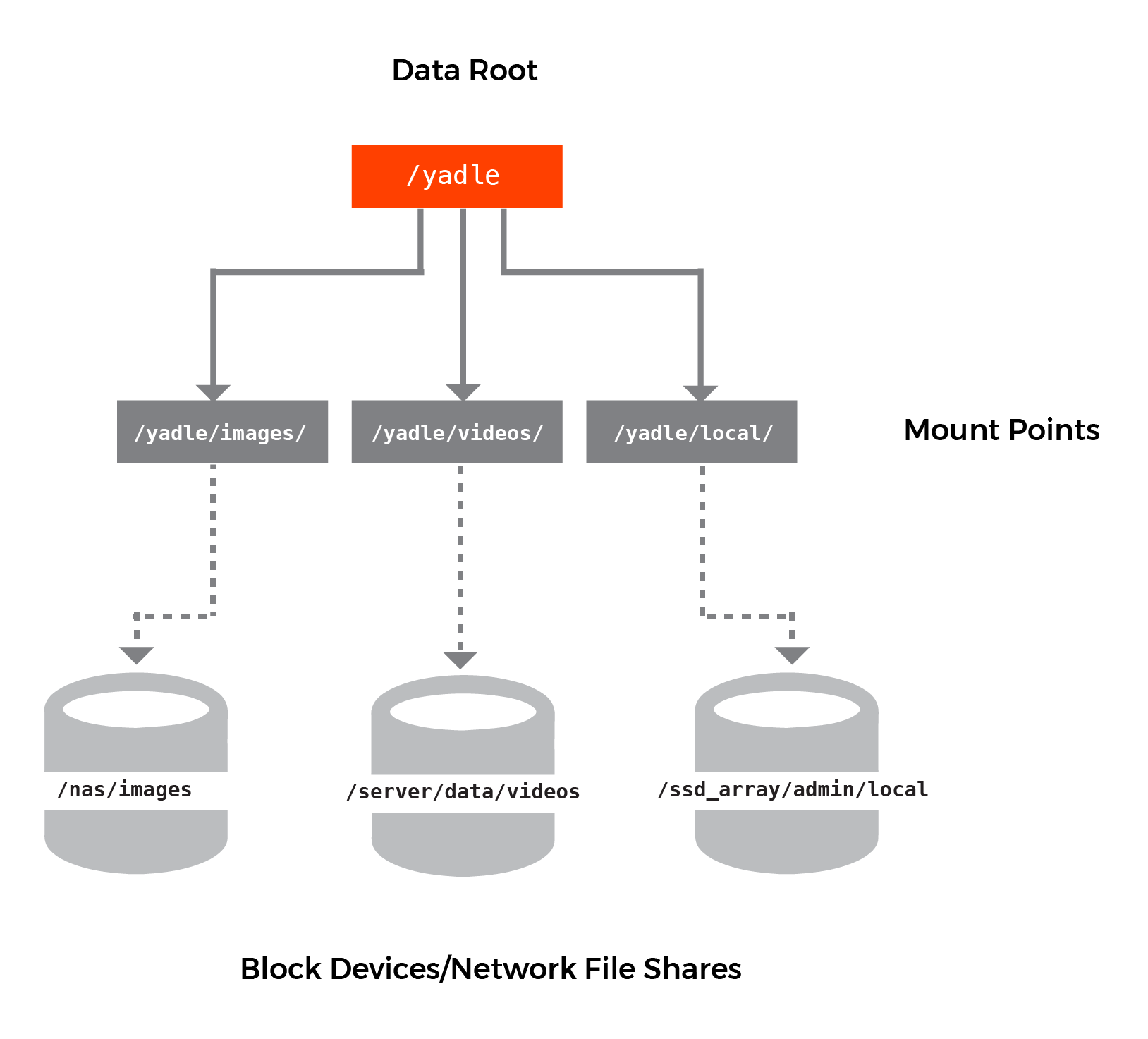
Installing Yadle » SaaS » Installation Guide
For SaaS deployments, there are two components that will be installed:
- Yadle agent: Scans files.
- Yadle agent microservices: Extracts embedded metadata and generates all thumbnail previews.
- The Yadle SaaS installer is a collection of bash scripts that will execute the steps needed to download, deploy, and configure Docker containers on your host machine.
- A pre-install check will run first, making sure the host system has all required packages installed and necessary system resources.
- The installer can be run multiple times without issue. Each time it is run, it examines and determines the state of the container, repairing or configuring any elements that are not correct.
- The scripts will output many messages. Progress messages will be displayed as the Docker images are downloaded, containers started and configured.
- Any problems will be displayed in red text and the scripts will stop.
- Successful installation will output docker status and “Installation Completed”.
1. Download Yadle SaaS Installer
The Yadle SaaS installer can be downloaded from https://download.yadle.com/installer/yadle_installer_saas.tar.gz or using curl in terminal.
$ curl -O https://download.yadle.com/installer/yadle_installer_saas.tar.gz
Once downloaded, extract the contents of yadle_installer_saas.tar.gz.
$ tar -xzf yadle_installer_saas.tar.gz
2. Copy Install Config File to Yadle SaaS Installer Directory
Yadle will provide you with a install_config file that contains installation parameters and keys specific to your organization.Copy the install_config file to the extracted Yadle SaaS Installer directory.
$ cp install_config ./yadle_installer_saas/
3. Run Yadle Agent Installer
The Yadle agent installer will execute two separate scripts in the following order:- Pre-install check
- Install Yadle agent
The script must be run as a sudoer or root user.
A. Standard Yadle agent installer.$ sudo ./install_yadle_agentB. Yadle agent installer for Qumulo file data platforms.
$ sudo ./install_yadle_agent --qumuloNote:
- You can pass the following command line options or enter them when prompted by the installer.
- --qumulo_host=<IP/FQDN of a Qumulo node>
- --qumulo_user=<username to access Qumulo API>
- --qumulo_password=<password for user>
4. Run Yadle Agent Microservices Installer
The script must be run as a sudoer or root user.
$ sudo ./install_yadle_microservices --install_type=agent
5. Confirm running Yadle containers
Run the following to verify all SaaS Yadle containers have been started and are running. The command must be run as sudoer or root user since Docker is being invoked.
$ sudo docker ps
The following containers should be listed in output:
NAMES <org>_changes_mode_red-thumbnails_1 <org>_changes_mode_small-thumbnails_1 <org>_changes_mode_exif_1 <org>_changes_mode_ocr_1 <org>_changes_mode_video-thumbnails_1 <org>_changes_mode_medium-thumbnails_1 <org>_geo_changes_mode_geometry-thumbnails_1 <org>_yadle_agent
6. Mounting File Systems to Scan with Yadle under Data Root
After successful installation of the Yadle agent and agent microservices, the next step is to mount the desired file systems to be scanned by Yadle under the specified Data Root Path (recommended /yadle).
Let’s imagine you have three network volumes that you want to scan with Yadle:
/nas/images/server/data/videos
/ssd_array/admin/local
The above three network volumes are mounted on the Yadle data root path /yadle with the following mount points:
/nas/images —> /yadle/images//server/data/videos —> /yadle/videos/
/ssd_array/admin/local —> /yadle/local/
 Note:
Note:
- The Yadle agent only requires read access to mounted filesystems. Best practice to mount as read-only.
- It is recommended to add these mounts to /etc/fstab file so that they are mounted each time the Yadle agent host system starts.
- Whenever additional filesystems are mounted under the Data Root, the Yadle agent and agent microservices need to be restarted (See Step 6).
7. Restart Yadle agent and agent microservices.
After mounting the desired file systems to be scanned by Yadle, restart both the Yadle agent and agent microservices. This is necessary for the containers to be able to access the newly mounted file systems.
Restart Yadle agent:$ cd /opt/yadle/agent $ sudo ./stop_yadle $ sudo ./start_yadleRestart Yadle agent microservices:
$ cd /opt/yadle/microservices/agent $ sudo ./stop_yadle $ sudo ./start_yadle
Once both agent and agent microservices have been restarted, proceed to the Setting up Yadle section of the online documentation to begin configuring Yadle Scan Paths.

